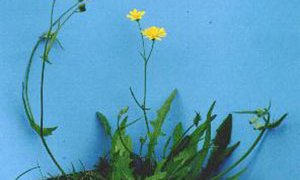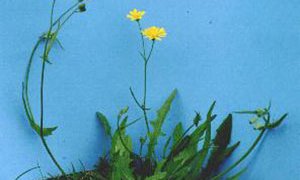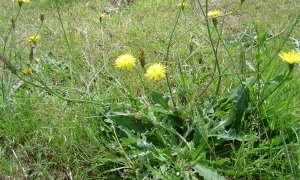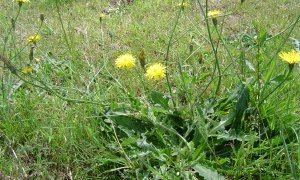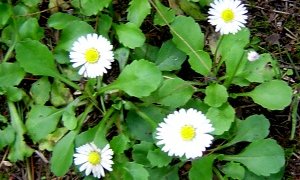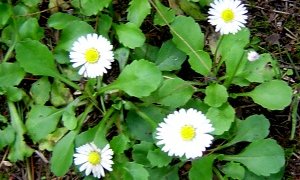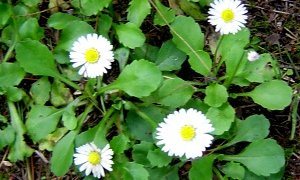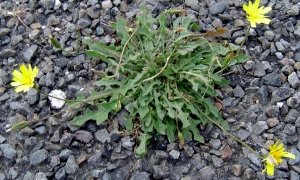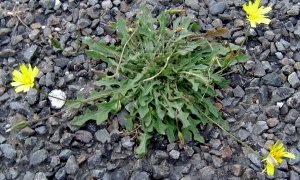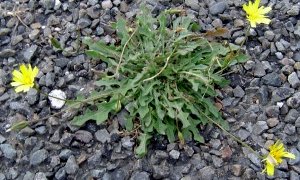Botanical name: Taraxacum officinale
Family name: Asteraceae
Overview
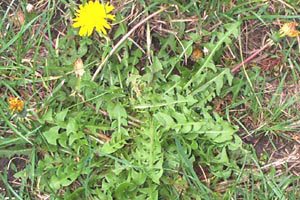
Dandelion.
Dandelion has a number of closely related weed species that look similar to it, and all these species tend to get lumped together and incorrectly get called "dandelions".
Dandelion is commonly found in pastures, though it doesn’t really cause any problems there. It establishes in pastures that have low plant numbers and often have fairly low soil fertility, as dandelion can tolerate this. As livestock will eat the leaves of dandelion, this is not a major concern, though it probably produces less leaf material than perennial ryegrass plants would.
In research we have conducted at Massey University, the mineral content of dandelion leaves was found to be significantly higher than for ryegrass and clover leaves for phosphorous, magnesium, sodium, copper, zinc and boron, which could actually give benefits to animals grazing on these leaves.
In turf, it is more of a problem as it tends to be an eye sore and can be quite difficult to kill. It is also commonly found in orchards where it probably competes with trees for water and nutrients. The deep tap root allows it to stay green during droughts as it can obtain water from deep down in the soil profile.
Distinguishing features

Stem and leaf comparison between the dandelion, hawksbeard, catsear and hawkbit.
The common weed species confused with dandelion are catsear, hawksbeard and hawkbit. All four weeds grow as rosettes, with upright flower stems topped by yellow flowers which have pappus attached to their seeds.
Catsear and hawkbit have hairy leaves, whereas dandelion and hawksbeard have leaves with almost no hairs. Catsear and hawksbeard have branched flower stems whereas hawkbit and dandelion flower stems are unbranched. The flower stem of a dandelion is fleshy and hollow whereas that of hawkbit tends to be thinner, more wiry and not as hollow.
In pastures where chicory has been planted, it can be difficult to tell a dandelion from chicory when it is at the rosette stage. However, once chicory flowers, it has tall, branched leafy stems with blue flowers.
Control

Dandelion flower and leaf.
Any part of a dandelion root can produce new plants if it should be cut up, so dandelion will usually regrow successfully following cultivation, especially if the roots aren't buried too deeply. Once established, it cannot be removed selectively from pastures using herbicides.
The chemicals which can be used to kill it in turf such as clopyralid and dicamba will also kill the white clover in the pasture, which farmers should try to avoid. Home gardeners can remove it from lawns using a mixture of MCPA, mecoprop and dicamba which can be bought at most garden centres, and commercial green-keepers could use this mixture or a triclopyr/picloram mixture (Victory Gold). A number of residual herbicides are ineffective against dandelion too. Amitrole will not control dandelion in orchards, but glyphosate will.
Similar species
Hawksbeard
Hawksbeard starts as a flat rosette then produces branched leafy stems with yellow flowers.
